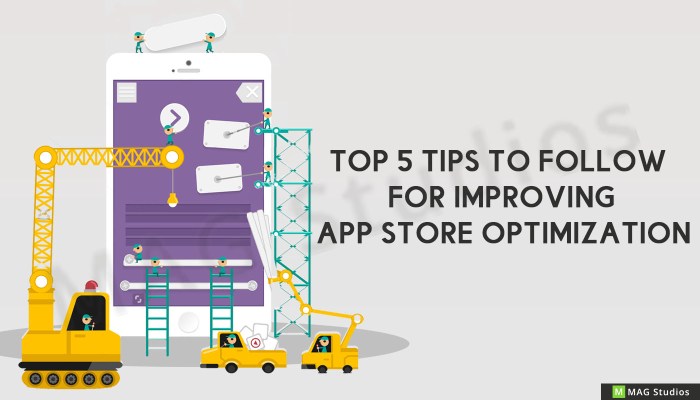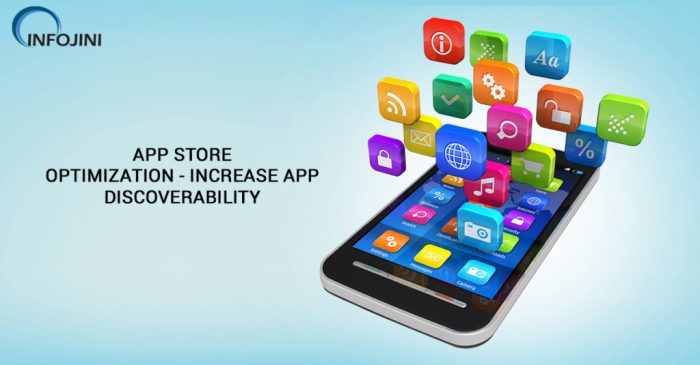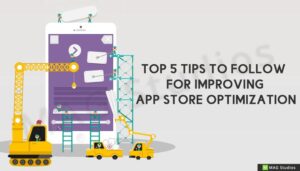Cross-Promotion Techniques for ASO Success
Cross-Promotion Techniques to Enhance ASO Efforts helps app developers boost their app store rankings. It explores various strategies, from identifying ideal partners to crafting compelling campaigns, and implementing effective tracking mechanisms. This guide provides a comprehensive overview of cross-promotion, covering everything from the basics to advanced techniques.
Leveraging cross-promotion for ASO involves more than just basic marketing. It necessitates strategic partnerships, clear communication, and meticulous tracking to ensure campaign effectiveness. This guide provides actionable steps to build successful cross-promotion campaigns and achieve significant results in app store optimization.
Introduction to Cross-Promotion for App Store Optimization (ASO)
Cross-promotion, in the context of app stores, involves leveraging partnerships with other apps, websites, or platforms to mutually promote each other’s offerings. This strategy is a powerful tool for boosting visibility and downloads, directly impacting an app’s ranking and discoverability. It extends beyond simple mentions and includes collaborations that create a synergistic effect.Effective cross-promotion strategies can significantly enhance ASO efforts by expanding reach, exposing the app to a broader audience, and driving increased user engagement and downloads.
This is often more cost-effective than traditional advertising methods and can generate authentic interest from potential users who discover the app through a trusted source. The key is not just to get the app in front of more people, but to do so in a way that resonates with their existing interests and preferences.
Benefits of Cross-Promotion for ASO
Cross-promotion significantly expands an app’s reach beyond its initial user base. This broadened exposure can translate into a higher volume of downloads and installs, ultimately improving ASO rankings. The visibility boost often results from partnerships with complementary apps, reaching a highly targeted audience with pre-existing interest in similar functionalities. By creating a sense of trust and authenticity, cross-promotion strategies can also enhance user perception of the app’s value and quality.
Key Principles Behind Effective Cross-Promotion Strategies
Successful cross-promotion hinges on several key principles. These include a clear understanding of the target audience for both apps involved in the partnership. A strategic alignment of values and functionalities between the collaborating apps is crucial. This mutual benefit fosters a more organic and genuine promotion experience for users, reducing the risk of perceived spam or forced marketing.
The strategy should also prioritize transparency and avoid any misleading practices. Lastly, establishing clear metrics to track the success of the campaign is essential to refine and optimize future efforts.
Difference Between Cross-Promotion and Other Marketing Approaches
Cross-promotion differs from other marketing approaches in its collaborative nature. While traditional advertising might focus on broad market reach, cross-promotion targets specific user segments through partnerships with complementary apps. This targeted approach leads to more qualified downloads and installations, improving ASO metrics and user engagement. In contrast to paid advertising, cross-promotion leverages existing audiences, reducing costs while increasing the likelihood of conversions.
It also stands apart from affiliate marketing, which typically focuses on a single app driving traffic to another app through a commission structure, while cross-promotion aims to mutually benefit both parties by leveraging their respective user bases.
Cross-Promotion Strategies
This table Artikels various cross-promotion strategies, highlighting their descriptions, advantages, and potential drawbacks.
| Strategy | Description | Advantages | Disadvantages |
|---|---|---|---|
| App Bundles/Integrations | Offering the app as part of a larger bundle or integrating it within another app to increase visibility. | Increased exposure to a combined user base; potential for higher download volume. | Requires compatibility between apps and careful selection of partner apps; may require significant integration effort. |
| Co-marketing Campaigns | Joint promotional efforts, including social media campaigns, blog posts, or email marketing, promoting both apps. | Reach a wider audience through combined resources and potentially increase brand awareness. | Coordination and communication between teams can be challenging; may need significant investment in campaign development. |
| Cross-App Features/Functionality | Creating a feature in one app that directly promotes the other or integrating the two apps’ functionality. | High user engagement potential due to the integration; enhanced value proposition for users. | Complex development process; requires thorough planning and testing to avoid user frustration. |
Identifying Potential Cross-Promotion Partners

Source: mag-corp.com
Finding the right partners is crucial for successful cross-promotion campaigns. A well-chosen partner can significantly amplify your app’s visibility and attract new users. The key lies in identifying partners whose audience overlaps with yours and whose values align with your brand.Identifying suitable partners is a strategic process that requires careful consideration. It’s not simply about reaching out to anyone; it’s about building mutually beneficial relationships.
This approach ensures that your cross-promotion efforts resonate with the target audience and generate tangible results.
Criteria for Selecting Optimal Partners
Effective cross-promotion hinges on selecting partners whose target audience aligns with yours. Shared values and brand compatibility also contribute to a successful campaign. This approach guarantees that the promotion resonates with the intended audience and fosters trust and credibility.Aligning target audiences is paramount. Identifying partners with overlapping user demographics and interests is essential for maximizing the reach of your cross-promotion.
Consider factors like age, location, interests, and lifestyle to ensure a strong match.Brand compatibility is another critical criterion. Aligning with partners who share similar values and brand identity strengthens the credibility of your promotion and enhances its appeal to the target audience. A mismatch can lead to a jarring or unconvincing experience, undermining the campaign’s effectiveness.
Importance of Alignment in Values and Target Audience
Alignment in values and target audience is critical for a successful cross-promotion. A misalignment can lead to a loss of trust and credibility. A partner whose values are incongruent with your app’s brand may alienate your existing user base. Likewise, a partner with a drastically different target audience will likely not yield the desired results. It’s crucial to choose partners whose values and target audience complement your own.
Partner Type Comparison
Careful consideration of potential partners is essential. This table highlights different partner types, their target audiences, and their suitability for cross-promotion campaigns.
| Partner Type | Target Audience | Example | Advantages | Disadvantages |
|---|---|---|---|---|
| Gaming App | Mobile gamers, typically young adults | Clash of Clans | Potentially large and engaged user base; can reach a specific demographic effectively. | Competition for user attention might be fierce; ensuring a positive user experience is crucial. |
| Productivity App | Professionals, students, and business users | Evernote | Can tap into a dedicated and high-value user segment; often leads to more meaningful user acquisition. | May require a more sophisticated approach to cross-promotion, potentially needing to highlight specific features. |
| Social Media Platform | Active social media users, diverse demographics | Wide reach and potential for viral marketing; can target specific user groups. | Requires careful consideration of messaging to align with the platform’s user base. Potential for a diluted message. | |
| Educational App | Students, educators, and learners of all ages | Khan Academy | Can attract a user base seeking educational resources; often builds trust and credibility. | Requires careful messaging to avoid seeming overly promotional; may need to focus on shared learning goals. |
Crafting Effective Cross-Promotion Campaigns

Source: infojiniconsulting.com
Crafting successful cross-promotion campaigns requires a strategic approach that goes beyond simply announcing partnerships. A well-executed campaign leverages the strengths of both apps to generate significant user acquisition and engagement. This involves careful planning, compelling messaging, and a deep understanding of the target audiences of each app involved.Effective cross-promotion campaigns are not one-size-fits-all; they need to be tailored to the specific apps and platforms involved.
This requires careful consideration of each partner’s strengths, target audience, and existing marketing channels. This process should also analyze the desired outcome of the promotion. Understanding the specific goals for the campaign, such as increased downloads, user engagement, or in-app purchases, is crucial to crafting a successful strategy.
Key Elements of Clear Messaging
Clear and concise messaging is paramount in a cross-promotion campaign. It’s crucial to highlight the value proposition for users of both apps. This involves clearly articulating the benefits of using both apps together. The messaging should be easily understandable and engaging, making a compelling case for why users should be interested in trying the promoted apps. For example, if one app provides a service that complements the other, highlighting this synergy is key.
Tailoring Messaging for Different Partner Platforms
Different platforms require tailored messaging. Understanding the specific strengths and limitations of each platform is essential. For example, a social media campaign may focus on engaging visuals and concise copy, while a blog post might require more in-depth explanations of the apps’ functionalities. The level of detail and tone should align with the typical content of the platform.
Furthermore, each platform likely has its own best practices for promoting content; following these best practices can significantly improve the campaign’s reach and impact.
Creating Compelling Cross-Promotion Content
Creating compelling cross-promotion content involves understanding the target audience of each app. A campaign should emphasize how the combined apps enhance the user experience. The content should be engaging and visually appealing. Visual elements, such as high-quality images and videos, can significantly improve the effectiveness of the campaign. For example, a short video demonstrating how the apps work together can be highly effective.
Additionally, utilizing user-generated content or testimonials can build trust and authenticity.
Table of Key Elements of a Successful Cross-Promotion Campaign
| Element | Description | Example |
|---|---|---|
| Value Proposition | Clearly articulate the benefits of using both apps together. | “Streamline your workflow by connecting your task management app with our project planning app.” |
| Target Audience Alignment | Ensure the messaging resonates with the target audience of each app. | Highlighting features relevant to both app’s target audience, such as students and professionals. |
| Platform-Specific Messaging | Tailor messaging to the specific platform being used for promotion. | Using short, punchy captions for social media posts, versus detailed blog posts. |
| Visual Appeal | Utilize high-quality visuals to enhance engagement. | Employing eye-catching graphics, screenshots, or videos to illustrate the value proposition. |
| Call to Action (CTA) | Clearly direct users to the app store pages. | “Download [App Name] and [Partner App Name] today!” |
Implementing and Measuring Cross-Promotion Activities: Cross-Promotion Techniques To Enhance ASO Efforts
Successfully executing cross-promotion campaigns hinges on a well-defined implementation strategy and rigorous performance measurement. This involves meticulous planning, proactive execution, and comprehensive tracking to ensure the campaign achieves its objectives. Effective cross-promotion requires a nuanced understanding of both the campaign’s mechanics and the metrics that indicate success.A well-structured cross-promotion campaign involves several key steps, from identifying suitable partners to analyzing the results.
This requires careful consideration of various aspects, such as campaign duration, budget allocation, and promotion types, to achieve maximum impact.
Steps in Executing Cross-Promotion Campaigns
Planning and preparation are crucial for the success of any cross-promotion campaign. These steps ensure that the campaign aligns with the overall marketing objectives and is well-structured for optimal results. This involves meticulous coordination between all parties involved, to minimize risks and maximize the potential return on investment.
- Partner Selection and Agreement: Carefully select partners who align with your target audience and brand values. Establish clear agreements outlining responsibilities, promotional materials, and performance metrics. This ensures a clear understanding of expectations and responsibilities for both parties.
- Content Creation and Distribution: Develop engaging and informative promotional materials for both your app and the partner’s product. These materials should be well-targeted to the intended audience and should align with the brand identity of both parties involved. Ensure the content is accessible and user-friendly, and appropriate for the platform where it will be promoted.
- Campaign Launch and Monitoring: Implement the campaign across the agreed-upon channels. This involves active monitoring to track campaign progress and identify any issues early on. Regular updates and adjustments to the strategy are crucial to adapt to the evolving needs and trends.
- Performance Evaluation and Reporting: Collect and analyze data to evaluate campaign effectiveness. Generate reports that highlight key metrics and demonstrate the return on investment (ROI). This process enables a comprehensive understanding of the campaign’s impact.
Significance of Tracking Key Metrics
Tracking key metrics provides critical insights into campaign performance and allows for data-driven adjustments. Regular monitoring and analysis are crucial for maximizing the impact of cross-promotion efforts.
- Understanding Campaign Effectiveness: Tracking key metrics helps determine the success or failure of the campaign and allows for strategic adjustments. Analyzing the performance of each aspect allows for identification of areas for improvement, which ultimately contributes to better outcomes.
- Identifying Areas for Improvement: By analyzing data, areas for improvement can be identified in the campaign strategy. This enables informed decision-making and adjustments to maximize effectiveness and ROI. For example, if a particular promotional channel is underperforming, the budget allocation can be shifted to a more effective channel.
- Demonstrating ROI: Tracking metrics provides concrete evidence of the campaign’s impact, quantifying its contribution to the overall marketing objectives. This information is essential for justifying future investments and securing budget allocations.
Methods for Evaluating Campaign Performance
A comprehensive evaluation of campaign performance considers multiple factors, including reach, engagement, and conversions. Effective evaluation methods provide actionable insights for continuous improvement.
- Conversion Tracking: Implement tools to track conversions, such as app downloads, in-app purchases, or user registrations. This helps assess the effectiveness of the campaign in driving desired user actions.
- Engagement Metrics: Monitor engagement metrics, such as impressions, clicks, and time spent in the app, to understand user interaction with the promoted content. This allows for a deeper understanding of user behavior and preferences.
- A/B Testing: Employ A/B testing to compare different promotional strategies and messaging. This allows for optimizing campaign performance based on the data collected and helps identify the most effective approaches.
Design of a Campaign Monitoring Dashboard
A campaign monitoring dashboard provides a centralized view of key metrics. This allows for real-time tracking of campaign performance and identification of potential issues.
- Visual Representation of Data: A dashboard should present data in a visually accessible format, such as charts and graphs, to quickly identify trends and patterns. Visualizations facilitate a clearer understanding of the performance of different aspects of the campaign.
- Real-Time Data Updates: The dashboard should update in real-time to provide current performance data. This ensures that any potential issues or opportunities can be identified and addressed promptly.
- Customizable Views: The dashboard should allow for customization of views to focus on specific metrics and segments of the campaign. This ensures the dashboard is highly versatile and relevant to the user.
Key Metrics for Campaign Evaluation
A table summarizing key metrics for campaign evaluation, highlighting how to measure each metric.
| Metric | Description | How to Measure |
|---|---|---|
| App Downloads | Number of app downloads attributed to the campaign. | Use app store analytics or marketing platform tools. |
| In-App Purchases | Number of in-app purchases generated by the campaign. | Use in-app purchase analytics. |
| User Engagement | Level of user interaction with the app after the campaign. | Monitor daily active users (DAU), monthly active users (MAU), session duration, and other relevant metrics. |
| Click-Through Rate (CTR) | Percentage of users who clicked on the promotion. | Divide the number of clicks by the number of impressions. |
| Cost Per Acquisition (CPA) | Cost incurred to acquire a new user through the campaign. | Divide the total cost of the campaign by the total number of acquired users. |
Advanced Cross-Promotion Strategies
Leveraging innovative approaches, user-generated content, influencer marketing, and strategic social media campaigns, alongside A/B testing, significantly enhances the effectiveness of cross-promotion strategies. These methods, when implemented correctly, can yield substantial returns on investment (ROI) and contribute to a robust App Store Optimization (ASO) strategy.
Innovative Approaches to Cross-Promotion, Cross-Promotion Techniques to Enhance ASO Efforts
Advanced cross-promotion goes beyond basic partnerships. It involves exploring unconventional collaborations, leveraging emerging technologies, and developing unique campaign structures. For example, a fitness app might partner with a nutrition app, offering exclusive content and discounts to users of both platforms. This expands reach and fosters a loyal user base. This can also extend to integrating augmented reality (AR) elements into the cross-promotion campaign to create immersive user experiences, increasing engagement and brand recall.
Role of User-Generated Content in Cross-Promotion
User-generated content (UGC) plays a pivotal role in building trust and credibility. When users create content about an app, it provides authentic and relatable testimonials, fostering a sense of community and encouraging downloads. Apps can encourage UGC through contests, challenges, or by creating dedicated spaces for user feedback and reviews. For example, a photo-editing app might run a contest where users showcase their edited photos using the app’s features, rewarding the best entries.
Utilization of Influencer Marketing for Cross-Promotion
Influencer marketing effectively leverages the credibility of influential figures to promote an app to their audience. Selecting relevant influencers whose followers align with the app’s target demographic is crucial. A beauty app, for instance, could collaborate with beauty bloggers or vloggers, featuring the app’s tools and features within their content.
Strategies for Cross-Promotion on Social Media Platforms
Strategic social media campaigns are essential for amplifying the reach of a cross-promotion effort. Utilizing platform-specific features, like Instagram Stories or TikTok trends, allows for dynamic and engaging content that resonates with a broader audience. This can involve creating interactive polls, running contests, and showcasing the app’s key features through short, entertaining videos. Creating engaging content that aligns with platform trends, using relevant hashtags, and promoting cross-platform engagement through a coordinated campaign strategy are crucial components of a successful social media cross-promotion campaign.
Role of A/B Testing in Optimizing Cross-Promotion Campaigns
A/B testing is a vital component for optimizing cross-promotion campaigns. By comparing different versions of advertisements, messages, or campaign strategies, marketers can determine what resonates best with the target audience. This process involves rigorously testing different elements like call-to-actions, imagery, and ad copy to ascertain the most effective approach for generating downloads. For example, a mobile game app might test various ad creatives, analyzing which ones generate the highest click-through rates and ultimately more downloads.
Analyzing the data from these tests helps refine the strategy for better outcomes.
Case Studies and Examples of Successful Cross-Promotions
Cross-promotion strategies, when executed effectively, can significantly boost app visibility and user acquisition. Real-world examples highlight the diverse approaches and the impact these collaborations can have. Analyzing these cases offers valuable insights for tailoring successful campaigns.
Illustrative Examples of Cross-Promotional Success
Several successful cross-promotion campaigns demonstrate the power of strategic partnerships. Understanding the strategies and outcomes can provide valuable lessons for crafting effective campaigns.
- Fitness App and Music Streaming Service: A fitness app partnered with a popular music streaming service to offer exclusive workout playlists and synchronized audio experiences. Users could seamlessly access pre-curated playlists designed for specific workouts within the fitness app. The music service gained a wider audience, and the fitness app benefited from increased user engagement and retention. Users were more likely to stay committed to their workout routines when accompanied by motivating music.
The campaign generated a notable increase in app downloads and in-app purchases, showcasing the success of this strategy.
- Travel Booking App and Hotel Chain: A travel booking app collaborated with a leading hotel chain to provide exclusive discounts and promotions. Users could access exclusive hotel deals and special offers directly within the app. This cross-promotion led to a significant increase in bookings for both the hotel chain and the travel app. The travel app attracted new users through the unique offers, while the hotel chain expanded its customer reach and fostered positive brand association.
- Productivity App and Calendar Application: A productivity app integrated with a popular calendar application to streamline scheduling and task management. Users could easily schedule tasks and add reminders directly within the productivity app, while the calendar app gained a new function to enhance user experience. This synergy resulted in higher user satisfaction and engagement with both apps. The collaboration showcased the potential of integrated functionality to streamline workflows and improve productivity.
Summary Table of Key Takeaways
This table summarizes the key takeaways from the illustrative cross-promotion examples.
| Case Study | Strategy | Results |
|---|---|---|
| Fitness App and Music Streaming Service | Exclusive workout playlists, synchronized audio | Increased app downloads, in-app purchases, and user engagement. |
| Travel Booking App and Hotel Chain | Exclusive discounts and promotions | Significant increase in bookings for both entities, expanded customer reach, positive brand association. |
| Productivity App and Calendar Application | Integrated scheduling and task management | Higher user satisfaction and engagement, streamlined workflows, improved productivity. |
Future Trends in Cross-Promotion for ASO
Cross-promotion strategies for app store optimization (ASO) are constantly evolving, driven by changes in user behavior, technological advancements, and market dynamics. Staying ahead of these trends is crucial for maintaining a competitive edge and maximizing app visibility. Understanding the future trajectory of cross-promotion will allow developers to proactively adapt their strategies to achieve greater success.The future of cross-promotion hinges on several key factors.
These include the increasing sophistication of AI-powered tools, the rise of social media engagement strategies, and the evolving preferences of app users. Recognizing and capitalizing on these developments will be essential for app developers to effectively leverage cross-promotion and improve their ASO efforts.
Emerging Trends in Cross-Promotion Strategies
Several key trends are shaping the future of cross-promotion for app store optimization. These include the increasing use of AI-powered tools, a greater emphasis on user engagement through social media, and the rise of personalized cross-promotional campaigns. Developers must proactively anticipate and adapt to these trends to remain competitive in the app market.
- AI-Powered Cross-Promotion: AI algorithms are becoming increasingly sophisticated, enabling more precise targeting and personalized recommendations. Tools can analyze vast amounts of data to identify potential cross-promotion partners and tailor campaigns to specific user segments, leading to higher conversion rates. For example, an AI-powered platform might recommend that an educational app cross-promote with a learning platform, targeting users who have shown interest in similar educational resources.
- Social Media Integration: Cross-promotion through social media is becoming a dominant strategy. Leveraging social media influencers, engaging in interactive campaigns, and utilizing social media ads to promote app features will be crucial. For instance, a gaming app might partner with a popular Twitch streamer to offer exclusive in-game items or features to their viewers, driving significant downloads and engagement.
- Personalized Cross-Promotion: Tailoring cross-promotion campaigns to specific user segments based on their interests and behavior is becoming more common. This personalization can lead to higher conversion rates and improved user engagement. For example, a productivity app might offer a cross-promotion deal with a fitness app, targeting users who have expressed interest in improving their work-life balance through increased productivity and fitness.
Impact of New Technologies on Cross-Promotion
New technologies, such as augmented reality (AR) and virtual reality (VR), are also influencing cross-promotion strategies. These technologies offer unique opportunities for engaging users and creating immersive experiences, driving app downloads and user retention. Developers who integrate these technologies into their cross-promotion strategies are likely to gain a competitive advantage.
- Augmented Reality (AR) Integration: AR can be leveraged to create interactive experiences that showcase the app’s features. Imagine an AR game that offers rewards for playing within a user’s real-world environment, potentially cross-promoting with a location-based service or retail store.
- Virtual Reality (VR) Integration: VR experiences can offer immersive trials of an app, providing potential users with a preview of the app’s functionality and features. A VR-based simulation game might cross-promote with a VR-compatible controller manufacturer, targeting users interested in VR gaming.
Importance of Adapting to Change in the Cross-Promotion Landscape
The app market is constantly evolving, requiring developers to adapt their cross-promotion strategies accordingly. Ignoring these shifts can result in decreased visibility and lower downloads. Staying agile and responsive to change is critical for long-term success. By continuously monitoring trends and adjusting strategies, developers can effectively capitalize on opportunities and maintain a competitive edge.
Evolving Trends in Cross-Promotion
| Trend | Description | Impact on ASO |
|---|---|---|
| AI-Powered Cross-Promotion | Utilizing AI algorithms for precise targeting, personalized recommendations, and campaign optimization. | Increased efficiency, higher conversion rates, improved user engagement. |
| Social Media Integration | Leveraging social media platforms to engage users, promote apps, and drive downloads through influencers and campaigns. | Enhanced brand awareness, increased visibility, higher user acquisition. |
| Personalized Cross-Promotion | Tailoring cross-promotion campaigns to specific user segments based on their interests and behaviors. | Higher conversion rates, improved user experience, increased user retention. |
| AR/VR Integration | Utilizing AR/VR technologies to create interactive experiences and immersive trials of app features. | Enhanced user engagement, increased app trials, unique user experience. |
Final Conclusion
In conclusion, successful cross-promotion campaigns for app store optimization require a multifaceted approach, encompassing strategic partnerships, compelling content, and meticulous tracking. By understanding the nuances of cross-promotion, app developers can significantly enhance their ASO efforts and achieve greater visibility in the app store marketplace. The future of cross-promotion hinges on adaptability to evolving trends and innovative approaches. Staying informed and adaptable is key to sustained success.













Post Comment